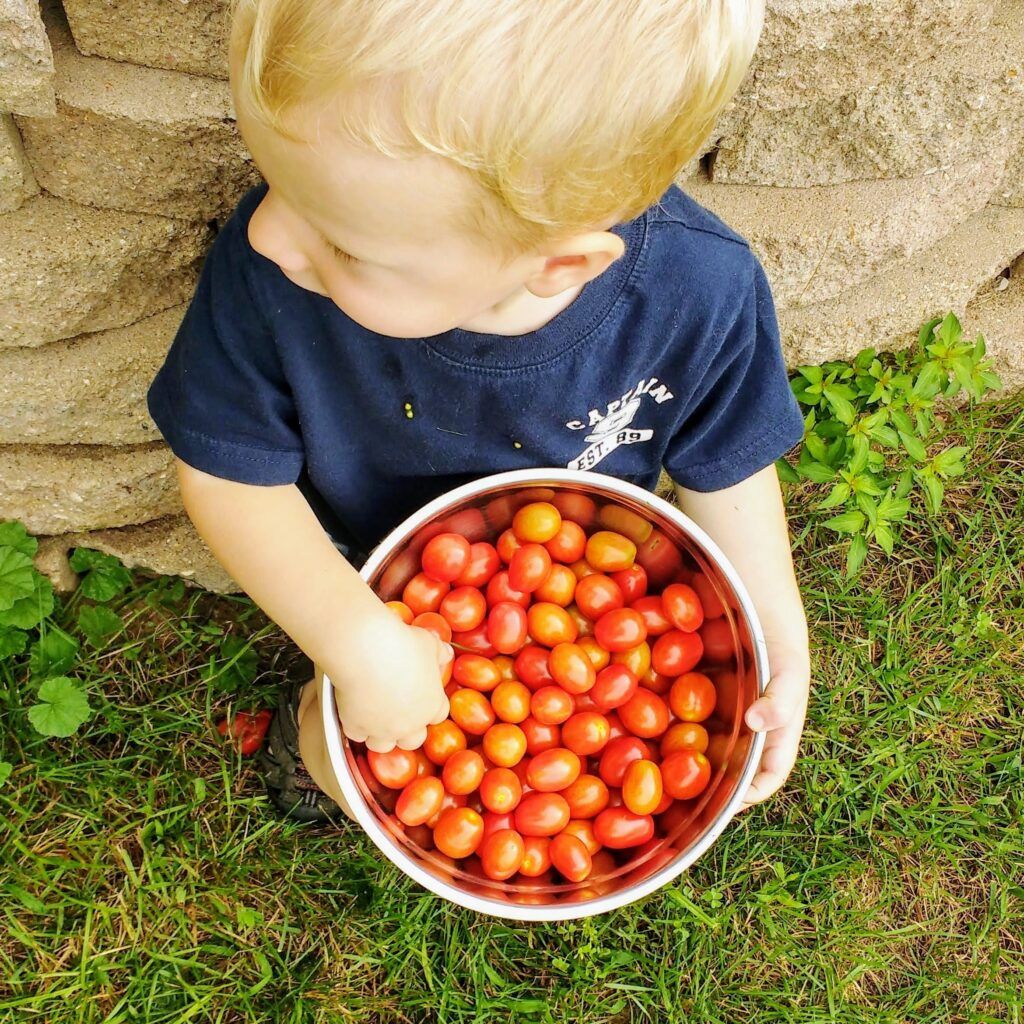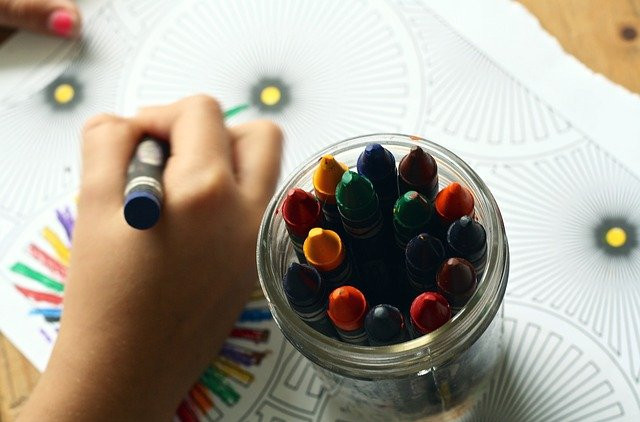Welcome to a new miniseries on Gardening With Kids! From toddlers to preschoolers to school-aged kids, planting a garden can be a fun and educational family activity for all ages.
This first post will cover all aspects of planning a garden with kids: the benefits of gardening with kids, determining the size and type of garden, gathering inspiration, choosing plants, and designing the layout.

Why Garden With Kids?
Our kids love to explore and help in the garden. Besides the fun of playing in the dirt, there are so many benefits to gardening with children. Here are just a few of them:
- Learning where food comes from through hands-on experience
- Increasing interest in trying healthy veggies they’ve grown themselves
- Connecting to and appreciating nature
- Learning about the lifecycles of various plants
- Developing patience as they wait for their seeds to sprout and grow
- Fostering responsibility in caring for their garden
- Bonding as a family in working together to create something new
Size and Type of the Garden
As you start the planning process, it is a good idea to determine the size and type of garden you want to plant. Even if you garden every year, it helps to revisit these aspects as you may want to switch it up from year to year.
Understanding the area you have available is an important step. If you have a small space or want a designated space for your child’s own garden, container gardens are a great option. If you have a larger space available, raised beds are the way to go. For flexibility in the garden shape, an in-ground garden may be your best choice.
A combination of container gardens along side raised beds or in-ground gardens can be quite pretty as well. Our garden usually ends up using all three options.

Container Gardens
Container gardens are a convenient option and work well for a small space. However, they can require a lot of watering, especially for tomato plants in containers.
Even within container gardens, there are quite a few options for how big or small you can go depending on the pot size. Just keep in mind the root limitations for plants. Flowers work well in container gardens, but vegetables can be limited in how big they will grow.
One container option is planting one vegetable like a tomato or pepper plant in the center of a large pot and a few flowers around the outer edge. Marigolds are a nice complimentary flower that help keep bugs away.
In-Ground Garden
In-ground areas are an easy and inexpensive place to plant that allow for flexibility in the garden shape. Depending on the quality of your soil, you may want to add a layer of topsoil to aid plant growth.
For this type especially, you will need to plan for keeping out any hungry critters. Use protective fencing or select plants that bunnies and deer avoid.
Raised Beds
If you have the space, raised garden beds have quite a few benefits. They help prevent weeds, allow for good drainage and keep a barrier for some garden pests like slugs. It can also be easier on your back to garden in a raised bed.
One of the biggest benefits of raised beds is plant growth. The beds keep the soil warmer and allow room for plants to grow deep roots. I have found our plants thrive and grow so much bigger in raised garden beds than containers or in-ground.
The drawbacks to raised gardens are that they take time and money to assemble. Also, they are limited to mostly square or rectangular shapes.
Type of Plants
Another factor to consider is the general type of plants you want in your garden. Will you be planting herbs, vegetables, fruits, flowers or a combination?
Planting vegetables is a great way to get kids excited about eating veggies. Watching and waiting for new tomatoes or cucumbers to grow and ripen can be an fascinating process. Plus, veggies taste so much better when they are fresh from the garden!
In a vegetable garden, flowers and herbs can add beauty and function, especially ones that repel bugs. In our garden, we plant basil and marigolds every year. Petunias, rosemary, and lavender are other good options for keeping away pests.
Gather Inspiration

Now that you have a few guidelines in mind for the general size and type of garden, let’s have fun with gathering inspiration.
Take some time to collect any materials you think your kids will enjoy looking at together. If you already have a collection of seed packets like in our household, get those out and sort through them.
Other good sources of inspiration include seed catalogs, gardening books or Pinterest. This is a great resource for digital or print free garden seed catalogs. For Pinterest inspiration, check out my Pinterest gardening page.
Choose Your Plants
After looking through all the plant options, your kids may be bursting with ideas! Encourage your child to select their own plants, but give them a specific number of plants they can choose.
When selecting your plants, it’s also helpful to make sure they will thrive in your region. For the US, this is a handy resource: USDA Plant Hardiness Zone Map.
For our garden this year, we will have our regular staples of tomatoes, kale, basil, and marigolds. Each child picked two plants each to grow from seedlings, so we will add green beans, peas, zinnias, and an annual flower mix.
Design the Layout
Now that you have your plants selected, designing the layout is especially fun with kids.
For older children, start with some blank paper and let your child draw out their ideas. Will you do rows of plants or a more creative design? Keep all the same plants together or spread them out? Here is a helpful Companion Planting Guide for determining which plants to place next to each other.
For a fun activity for toddlers and young preschoolers, print out or draw pictures of each plant that will be in your garden. Let them practice their fine motor skills by cutting out the plant pictures. Then, have them glue all the pictures on a piece of paper in their own unique garden layout.
Hang on to those garden designs for when the weather is right for planting outside!
Related: Earth Day Vs. Arbor Day
Happy Garden Planning

Congratulations, you have made it through the garden planning process: determining the size and type of garden, collecting inspiration, selecting plants, and designing the layout!
When you are ready for the next stage of Gardening with Kids, head on over to How to Plant Seeds Indoors with Kids.
Are you planning a summer garden this year? Leave any questions or comments below!



